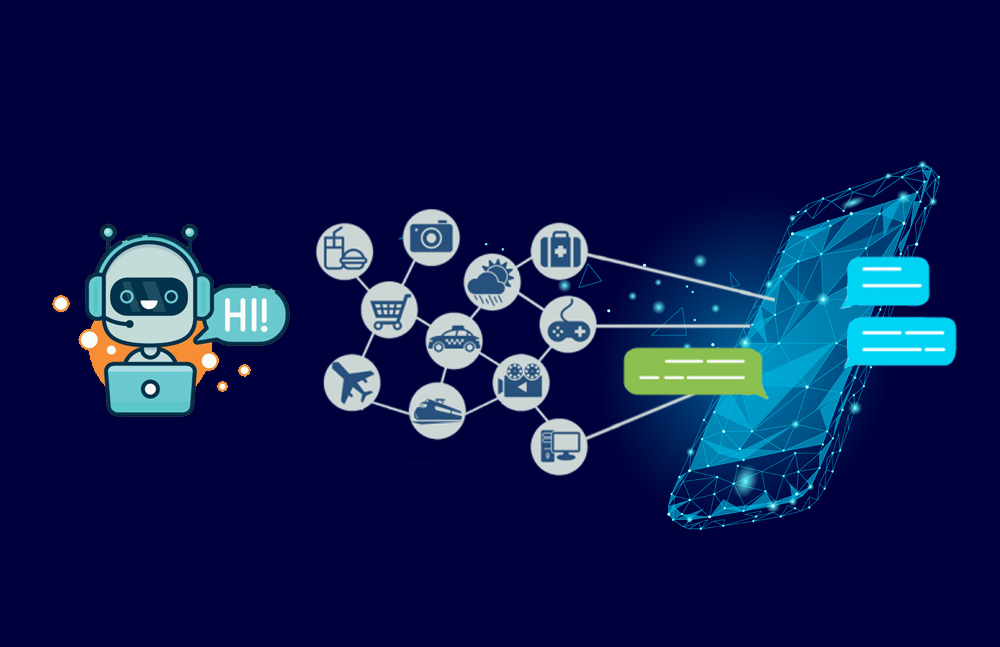A chatbot is a computer program that simulates human conversation through text or voice interactions. Chatbots are often used in customer service applications, where they can provide information or answer questions about products or services. They can also be used for entertainment purposes, such as providing companionship or playing games. Chatbots primarily communicate with users through text or speech, making them accessible through messaging apps, websites, or voice-activated devices. They can perform tasks and answer questions automatically, reducing the need for human intervention in certain processes.
Chatbots are typically powered by artificial intelligence (AI), which allows them to understand and respond to natural language. This means that users can interact with chatbots in a way that is similar to how they would interact with a human. For example, users can ask questions, give instructions, or make requests. AI-powered chatbots use natural language processing (NLP) to understand the meaning of user input and generate more natural responses.
There are two main types of chatbots: rule-based and AI-powered.
Rule-Based Chatbots: These bots follow a predefined set of rules. If a user’s inquiry matches one of these rules, the chatbot provides the corresponding predefined answer. Their capabilities are limited to what they are programmed for, and they don’t “learn” from user interactions.
AI-Driven Chatbots: These chatbots use machine learning and natural language processing (NLP) to understand and respond to user inputs. Over time, they can learn from user interactions and become better at predicting the correct response.
As NLP technology continues to develop, chatbots are becoming more sophisticated and capable. Chatbots are now able to hold more natural and engaging conversations with users. For example, chatbots can now be used to provide medical advice, financial planning, and legal assistance. In the future, chatbots are likely to become even more common and play an even greater role in customer service and other applications.
Here are some examples of chatbots:
Customer Support: Many companies use chatbots for first-level support, answering frequently asked questions or guiding users through troubleshooting steps.
Sales and Marketing: Chatbots can recommend products, guide users through a purchase process, or collect lead information.
Information and Productivity: These bots can provide news updates, weather information, or assist with scheduling and reminders. Technical support chatbots can help users troubleshoot problems.
Virtual Assistants: Some chatbots, like Siri and Google Assistant, act as virtual assistants, helping users perform tasks such as setting reminders, sending messages, or searching for information.
Data Collection: Chatbots can gather data from users during conversations, which can be valuable for businesses to improve their products and services.
Entertainment: Chatbots can also be used for entertainment purposes, such as creating interactive storytelling experiences or playing text-based games.
Personalization: Advanced chatbots can analyze user input and preferences to provide more personalized responses and recommendations.
Multilingual Support: Many chatbots are capable of communicating in multiple languages, increasing their accessibility to a global audience.
Integration: Chatbots can be integrated into various platforms and systems, such as websites, mobile apps, and messaging apps like Facebook Messenger or WhatsApp.

Chatbots are a versatile tool that can be used for a variety of purposes. They can provide a cost-effective way to provide customer support, collect feedback, and generate leads. They can also be a fun and engaging way to interact with customers and potential customers.
As AI technology continues to develop, chatbots are likely to become even more sophisticated and capable. They have the potential to revolutionize the way that businesses interact with their customers. They offer the advantage of being available 24/7, reducing the need for human intervention in many repetitive tasks. However, they also come with challenges, such as ensuring they understand user intent accurately and managing user expectations about their capabilities.


